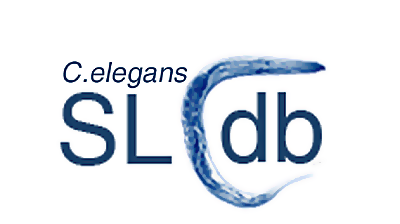Comparative genomic approaches have proven to be powerful tools in identifying genes as well as categorizing them based on protein functions. One product is the HGNC (Human Gene Nomenclature Committee) Solute Carrier (SLC) System (Hediger et al., 2004; He et al., 2009). It comprises 55 families with a total of over 365 putative proteins that act as uniporters, symporters or antiporters in the plasma cell membrane as well as in mitochondrial and vesicular membranes. The range of transported substrates covers inorganic and organic cations/anions, amino acids and peptides, sugars, bile salts, urea, biogenic amines, neurotransmitters, ammonium, choline, vitamins, nucleosides/nucleotides, fatty acids, etc. In addition, numerous orphan transporters are contained that need their substrates be defined. Evidently these transporters are of critical importance for cellular homeostasis and thus many of these genes are highly conserved across species. Here we present the C. elegans SLCdb (www.wormslc.org), a database that lists the top C. elegans homologs to the mammalian SLC tables. This database allows for a quick identification of target genes by either directly searching for worm or SLC gene names or aliases and for retrieval of available information. The site also features a quick overview of all SLC families and the currently published knowledge on these transporters in C. eleganswith a reference list.
To date, the database contains 1886 homology datasets. The homologous C. elegans proteins have been selected step-wise. First the top BLASTP (Altschul et al., 1990) hits were selected, applying a cutoff threshold of E-20, which removes most false positives. In a next step genes that have been published but may have been below the threshold were manually added to the list. Since BLAST algorithms only do local alignments they do not account for protein lengths and overall homology. Because of that limitation we next used the NEEDLE algorithm (Needleman et al., 1970) for additional information and confirmation for the results obtained. For assessing of how well conserved a protein is within the nematode phylum, every single protein was then compared to its closest C. briggsae homolog (using NEEDLE), which usually yielded very high sequence identities and similarities. Finally, all results were compiled into a uniform format in the database, presenting the results sorted by NEEDLE score, showing the closest C. elegans homologs, a brief description of the protein functions (when available), links to WormBase and the C. briggsae homolog along with a brief description and the NEEDLE score.
References
Altschul SF, Gish W, Miller W, Myers EW, Lipman DJ. (1990). Basic local alignment search tool. J. Mol. Biol. 215, 403-410. 
He L, Vasiliou K, Nebert DW. (2009). Analysis and update of the human solute carrier (SLC) gene superfamily. Hum. Genomics 3, 195-206. 
Hediger MA, Romero MF, Peng JB, Rolfs A, Takanaga H, Bruford EA. (2004). The ABCs of solute carriers: physiological, pathological and therapeutic implications of human membrane transport proteins. Pflugers Arch. 447, 465-468. 
Needleman SB, Wunsch CD. (1970). A general method applicable to the search for similarities in the amino acid sequence of two proteins. J. Mol. Biol. 48, 443-453. 
Articles submitted to the Worm Breeder's Gazette should not be cited in bibliographies. Material contained here should be treated as personal communication and cited as such only with the consent of the author.

Leave a Reply
You must be logged in to post a comment.